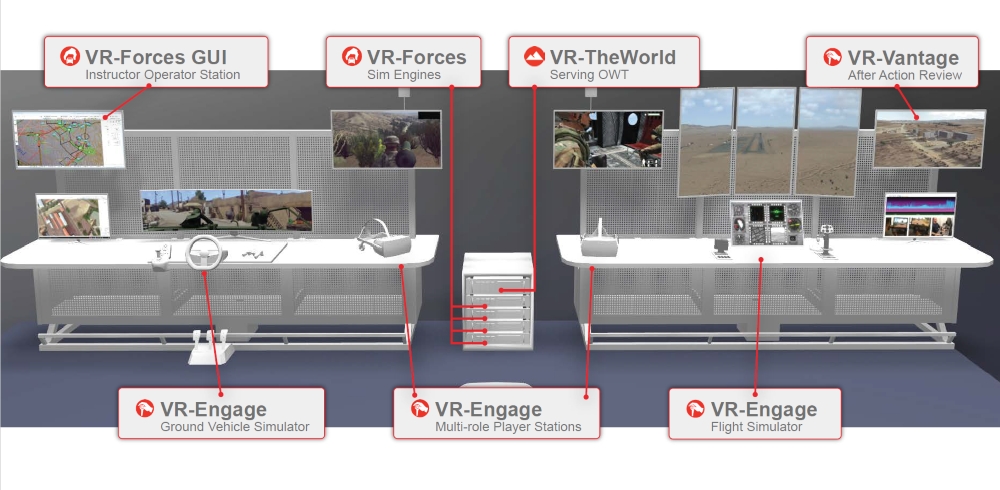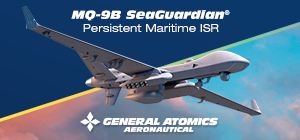
During the AUSA exhibition, Singapore-based defence technology group ST Engineering showcased its training and simulation capabilities at the recent Association of the United States Army (AUSA) annual meeting in Washington, presenting a portfolio refined through nearly four decades of operational experience with the Singapore Armed Forces. The company's approach offers the US Army a field-tested methodology for cost-effective, high-fidelity training that addresses the constraints of limited training time, space, and resources.
ST Engineering's simulation expertise stems from Singapore's particular strategic circumstances. The island nation faces severe land constraints while maintaining sophisticated defence requirements, creating an environment where simulation-based training evolved from convenience to necessity. Over 30 to 40 years, the Singapore Armed Forces developed comprehensive virtual training systems that now underpin much of their readiness posture. This extended operational deployment distinguishes ST Engineering's offerings from competitors. Rather than presenting laboratory concepts or recently fielded systems, the company brings solutions that have supported actual force generation for decades. The Singapore Armed Forces use these platforms to train citizen soldiers who face limited availability for training, a challenge directly relevant to the US National Guard and Reserve components.
The methodology centres on creating common synthetic environments that enable different units to train simultaneously across distributed locations while maintaining interoperability. Singapore has implemented simulation architectures where combat teams train on virtual simulators in one location while other units conduct exercises elsewhere, all connected in real-time and monitored from centralised exercise control centres. This approach directly addresses the US Army's ambitions for its Synthetic Training Environment programme.
At AUSA, ST Engineering prominently featured MAK ONE, the comprehensive simulation software suite developed by its subsidiary MAK Technologies. MAK ONE provides the underlying architecture for creating multi-domain synthetic environments with accurate geographical representation and high-fidelity model precision. The platform consists of several integrated components. VR-Forces serves as the simulation engine, generating computer-generated forces and synthetic battlefield activity for hundreds of military platforms and systems. VR-Vantage delivers the visualisation layer, rendering high-resolution 3D environments and 2D tactical maps. VR-Engage enables first-person role-playing, allowing trainees to operate as dismounted infantry, vehicle crew members, or aircraft pilots within the synthetic environment.
MAK ONE's architecture follows open standards and modular design principles, enabling integration with existing systems and future capabilities. The platform supports various terrain formats and can simulate environments ranging from dense urban areas to whole-world scenarios. Crucially, the same software operates across individual training stations, collective training systems, and mission rehearsal applications, reducing lifecycle costs through commonality.
Futhermore, ST Engineering demonstrated its Embedded Virtual Trainer concept, which packages MAK ONE capabilities into deployable training systems. These trainers support scenario-based collective training where hundreds of players can participate simultaneously in networked exercises. The interface deliberately incorporates familiar gaming conventions to reduce learning curves while maintaining tactical realism.
The system enables exercise controllers to construct scenarios with customised geography, buildings, and environmental conditions specific to any operational area worldwide. This flexibility allows units to rehearse missions in virtual representations of actual deployment locations, enhancing transfer of training to operational contexts. Training scenarios incorporate realistic threat behaviours and complex tactical situations. Red Team and Blue Team forces can engage in force-on-force training with accurate weapon effects, sensor performance, and communications modelling. The fidelity extends to environmental factors including weather, time of day, and terrain effects on mobility and line of sight.
During our visit to the booth, ST Engineering personnel delivered also a demonstration of the company’s First-Person View drone simulator, addressing the rapidly growing need for small unmanned aerial systems training. The simulator replicates the tactile, visual, and cognitive demands of operating tactical drones in contested environments. The system provides immersive FPV camera views, enabling operators to develop manual flying skills, target engagement techniques, and tactical employment concepts without consuming physical assets. Training scenarios include both surveillance and strike profiles, with AI-driven adversaries and collaborative multi-operator missions. The compact footprint allows rapid deployment to units for point-of-need training.
ST Engineering's credibility rests on substantial contract awards and operational deployments. The US Army selected MAK Technologies to develop Training Simulation Software and Training Management Tools for the Synthetic Training Environment Common Synthetic Environment under a prototype agreement worth $95 million. The US Marine Corps awarded contracts for Immersive Training Environment systems. The Australian Army selected MAK ONE for its Land Simulation Core programme. The UK Ministry of Defence incorporated MAK technologies into Defence Operational Training Capability systems.
The Georgia Army National Guard recently deployed MAK FIRES forward observer training systems, utilising the same underlying architecture. This National Guard adoption particularly validates the relevance for reserve components facing similar training time constraints as Singapore's citizen soldiers.
As far as future perspectives are concerned, ST Engineering emphasised its participation in the Partnership for Indo-Pacific Industrial Resilience (PIPIR), a multilateral defence industrial cooperation framework involving 14 nations. This positioning offers the US Army access to a trusted industrial partner within broader allied networks, potentially facilitating training interoperability across coalition forces. As it is often the case, the company's approach demonstrates how resource constraints can drive innovative solutions.
Hence, by necessity, Singapore developed simulation methodologies that maximise training effectiveness within severe limitations. These field-proven systems now offer the US Army tested alternatives to expand training capacity without proportional increases in range access, equipment wear, or environmental impact. The three to four decades of operational refinement provide confidence that extends beyond technical specifications into sustained force generation outcomes.








.png)
